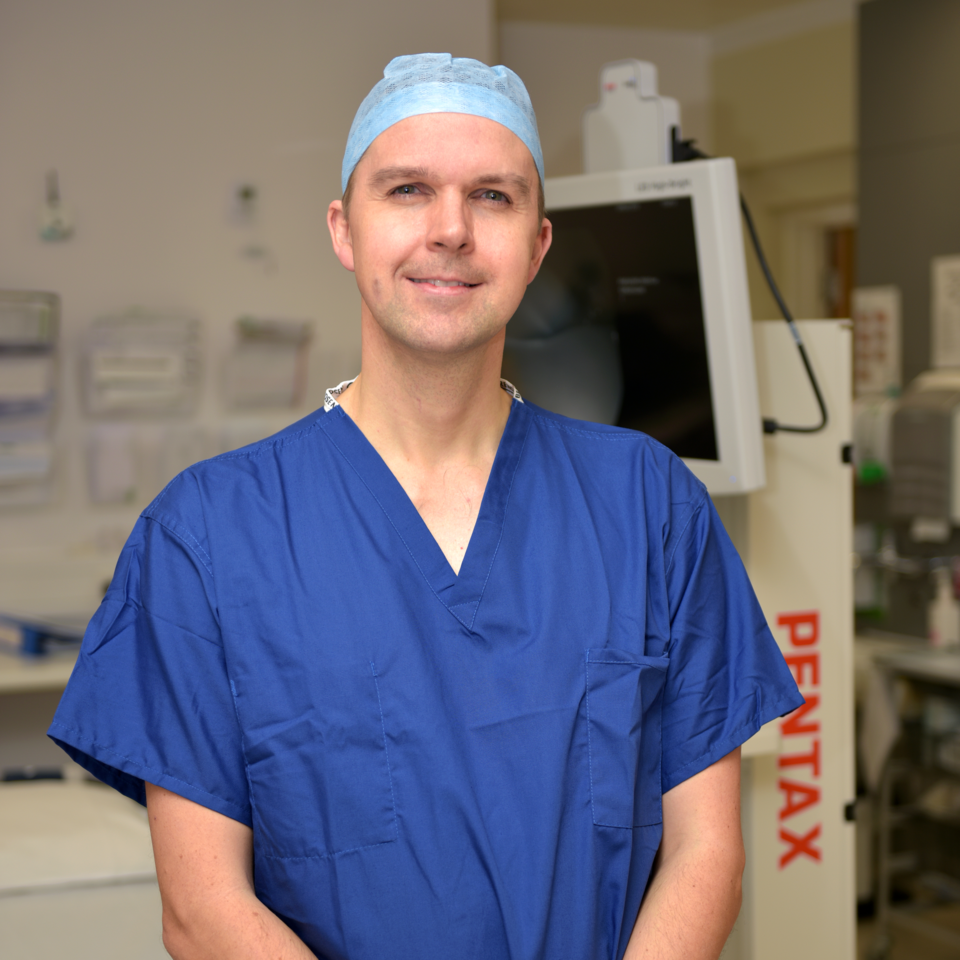Surgery
Breast Cancer Surgery
Breast cancer surgery can broadly be divided into breast-conserving surgery (removal of just the tumour / lump, with a safety rim round it) or mastectomy (removal of the breast). There is good evidence that survival outcomes are similar between the two approaches, provided clear margins are achieved and chest wall radiotherapy is given with breast-conserving surgery. However, breast-conserving surgery is a smaller surgery, and offers all the advantages of keeping the natural breast. Mr Robertson can advise about the choices suitable for your individual case. He can also use plastic breast surgery techniques to optimise the appearance of the breast, and these approaches may also allow preservation of the breast for some cases with more extensive disease, although sometimes a mastectomy will still be required. He can also offer breast reconstruction, either at the same time (immediate reconstruction) or at a later date (delayed reconstruction).
Surgery to the armpit (axilla) usually accompanies breast cancer surgery for invasive disease, as this is the best predictor of whether the cancer is trying to spread, and helps guide which additional treatments (adjuvant therapy) are required. It may just involve sampling a few lymph nodes (sentinel node biopsy), but sometimes a bigger surgery called an axillary node clearance is required.
Mr Robertson benefits from additional national training in Oncoplastic Breast Surgery, where plastic breast surgery is combined with removal of the disease to achieve the best results for patients. He won a prestigious National Oncoplastic Fellowship approved by the Royal College of Surgeons, providing additional skills and training in breast and plastic surgery. This allows the breast to be reshaped (such as a breast reduction or breast lift) or gaps filled (chest wall perforator flaps or lipofilling), at the same time as lump removal (or subsequently), or even a full breast reconstruction after mastectomy.
Sometimes chemotherapy or tablet treatment can be offered before surgery (neoadjuvant treatment) to reduce the tumour size, and Mr Robertson or Dr Kechagioglou might discuss this if suitable for your case.
Further useful resources and information on both benign and malignant breast problems are available free of charge at the Breast Cancer Now, MacMillan, and Cancer Research UK websites.

Chest Wall Perforator Flaps
Chest wall perforator flaps (such as “LICAP” flaps) utilise the fat in the tissues around the breast (often the lateral chest wall / fatty bulge below the armpit) to fill gaps left in the breast following breast lump removal. Small blood vessels travelling into this fat from the chest wall (LICAP perforators) can be used to swing the fat flap into the defect. This can be performed at the same time as the lump removal, or at a later date, and can be very effective, particularly for smaller breast sizes. It can also hide the scar off the breast itself, usually in the bra line, which some women may prefer.
Lipofilling
Lipofilling or “fat transfer” is a way of transferring fat droplets from one part of the body to another, to help with breast reconstruction or to fill gaps left after lump removal. A needle is used to suck fat off the donor site (often the patient’s belly or legs) and this is then injected where it is needed in the breast. It can be very effective, but often requires more than one attempt, as some fat can get resorbed over time. Whilst it largely involves needles and injections, it still requires a general anaesthetic.
Mastectomy
Mastectomy aims to remove the maximum amount of breast tissue possible at surgery, although studies have shown that it is not possible to reliably remove all breast tissue, and tiny amounts may remain. A simple mastectomy removes the most tissue, and is the most ablative, leaving a flat chest. Sometimes this is required if there is very extensive disease, or through patient choice, but we now try and offer immediate reconstruction at the same time as mastectomy wherever possible. This requires a skin-sparing mastectomy (preserving the breast skin) or nipple-sparing mastectomy (preserving the entire breast skin and nipple envelope) approach, which can offer a more realistic reconstruction. Ask Mr Robertson what approaches would be best for your individual tumour.
Breast Reconstruction
Breast reconstruction can be broadly broken down into implant-based (using a breast implant) or flap-based (using your own tissue from somewhere else on your body), and can be performed in the immediate or delayed setting. An alternative for those women not seeking reconstruction could be using an external prosthesis that can be worn under the clothes. Careful discussion is required prior to undergoing breast reconstruction, to help support you in making the right choice for you, having realistic expectations, and factoring in important implications for the full breast cancer treatment pathway (such as the possible effects from radiotherapy, for example).
Risk Reducing Mastectomy and Reconstruction
Patients with a high lifetime risk of developing breast cancer (>30% lifetime risk) may be candidates for bilateral risk-reducing mastectomy and reconstruction. This offers the best risk-reduction possible. However, there are also other ways of managing risk. It may be particularly beneficial for patients who carry a high-risk gene (such as a BRCA gene mutation). If you are considering this type of surgery, Mr Robertson would usually recommend that you see a Clinical Geneticist to calculate your personal lifetime breast cancer risk (usually based on your family history of breast cancer, or personal breast cancer type), to help better assess if this is right for your individual risk. Mr Robertson won a prize from the Association of Breast Surgery for a scientific paper on Risk Reducing Mastectomy and Reconstruction.
Nipple Reconstruction
If you have had to have your nipple removed as part of breast cancer surgery, Mr Robertson can offer nipple reconstruction surgery. This can usually be performed under local anaesthetic as a day case surgery.
Mastectomy scar revision
After mastectomy, occasionally women can experience problems with their scar, such as a skin bulge at one end, and this can be improved by mastectomy scar revision surgery.

Book an Appointment
Get in touch today and book an appointment with a consultant.